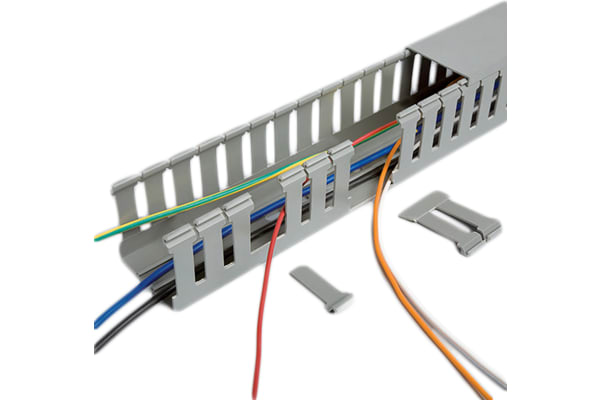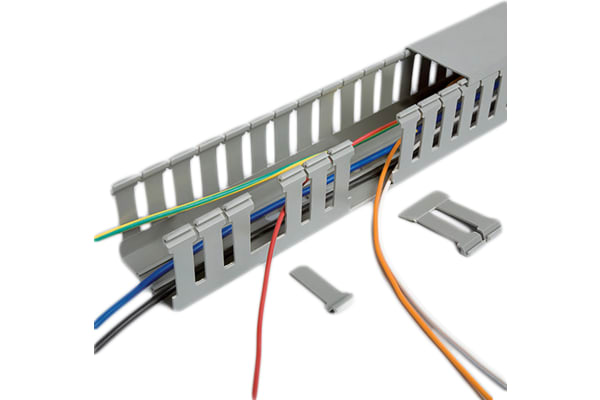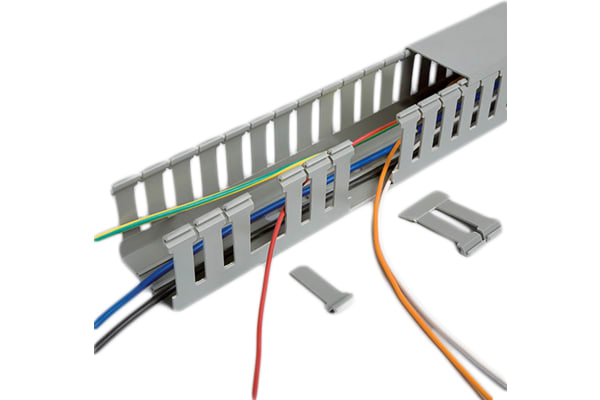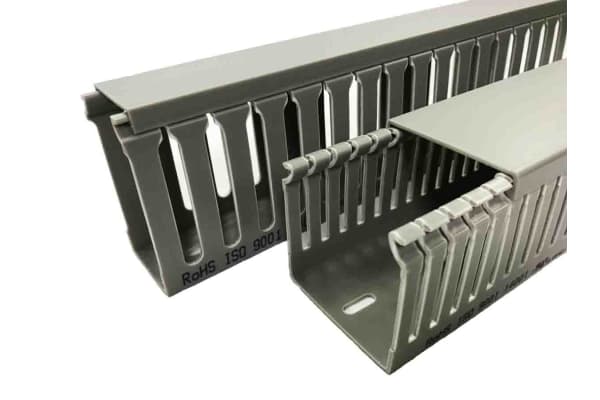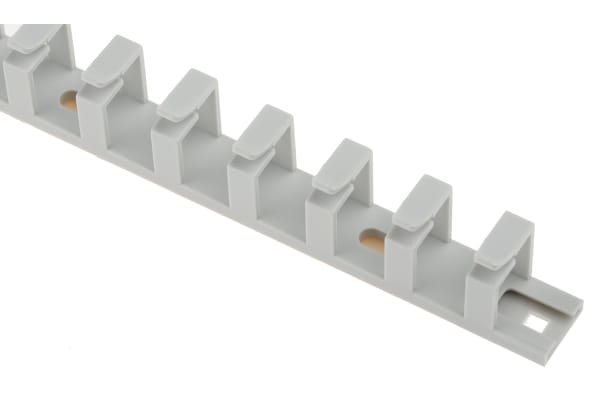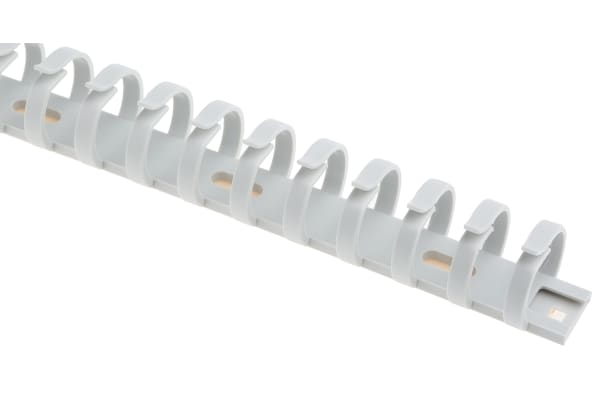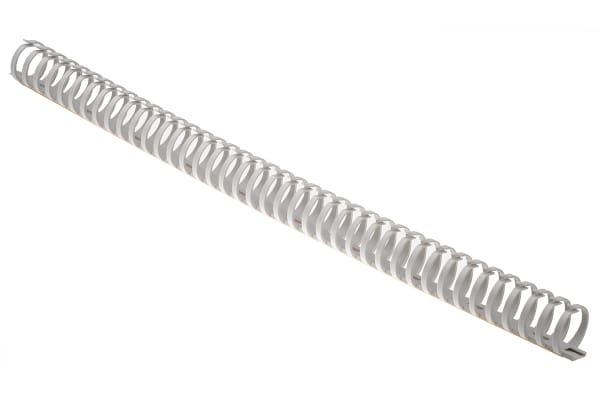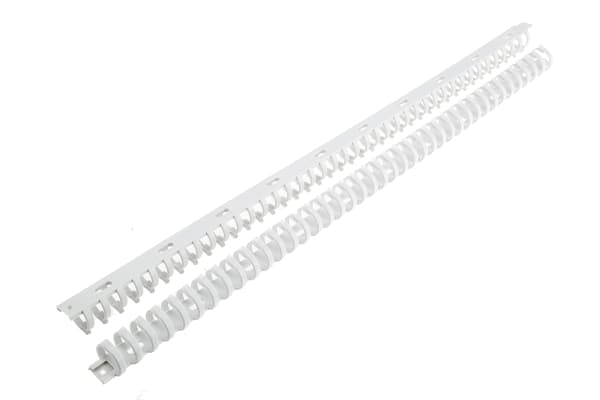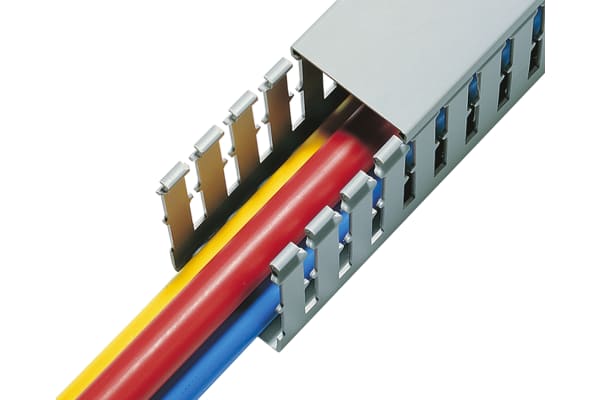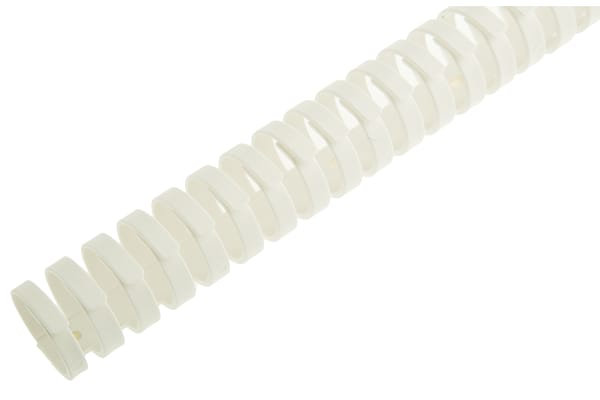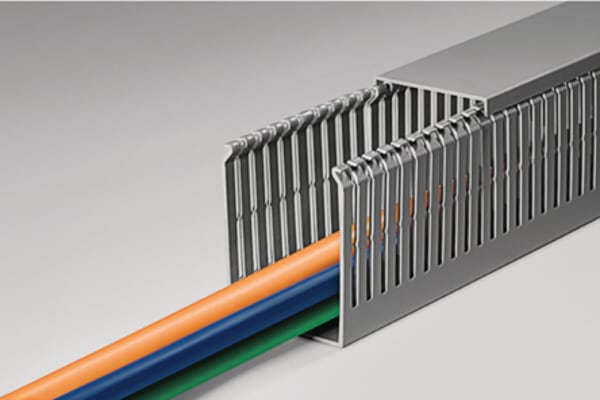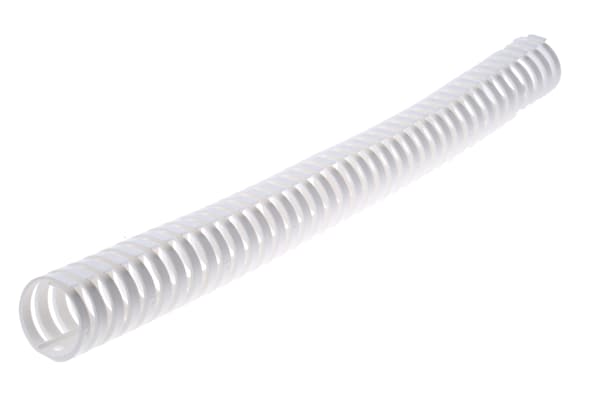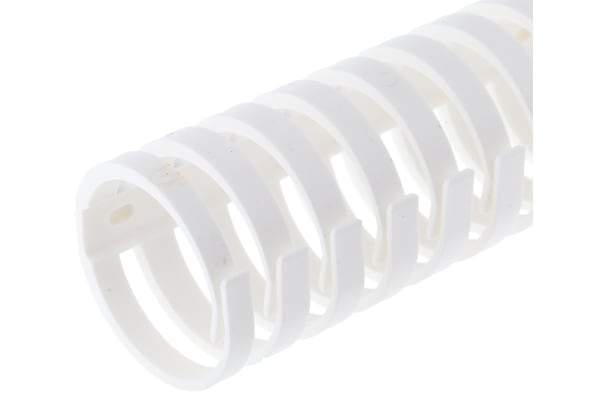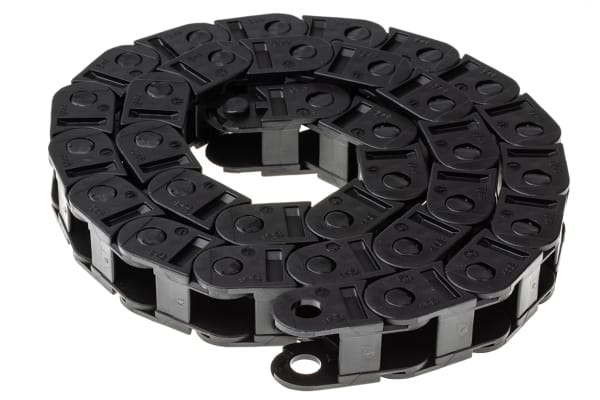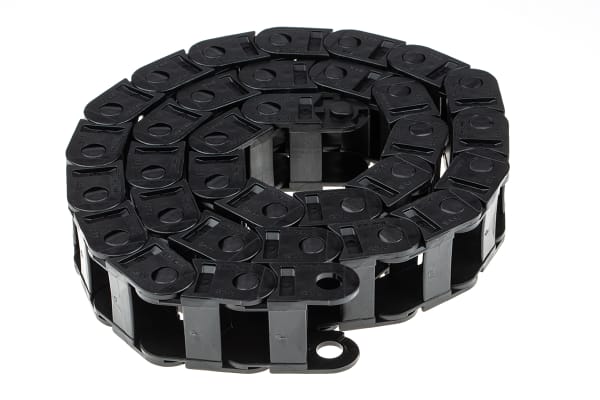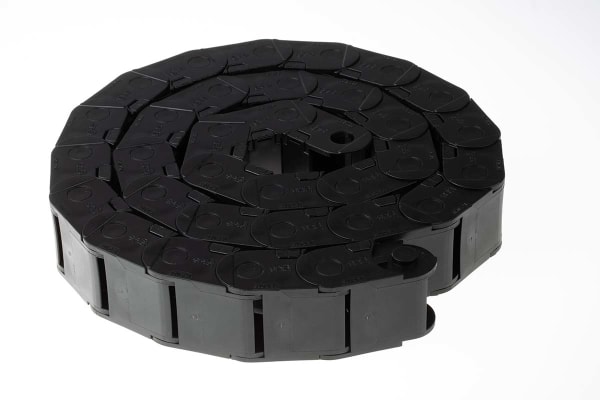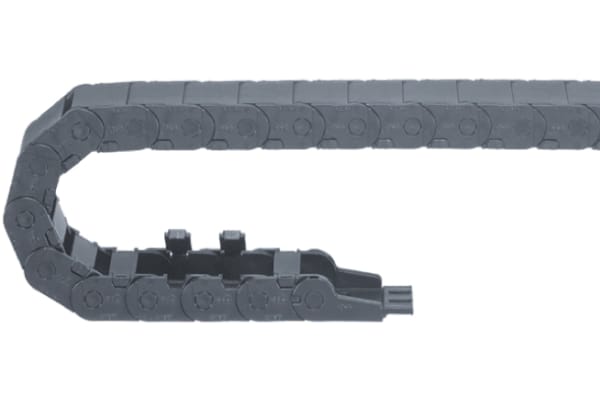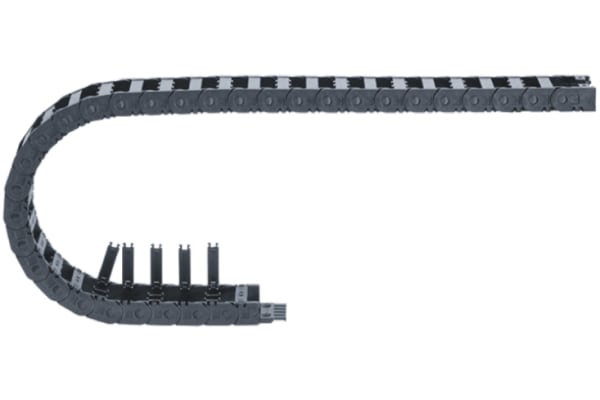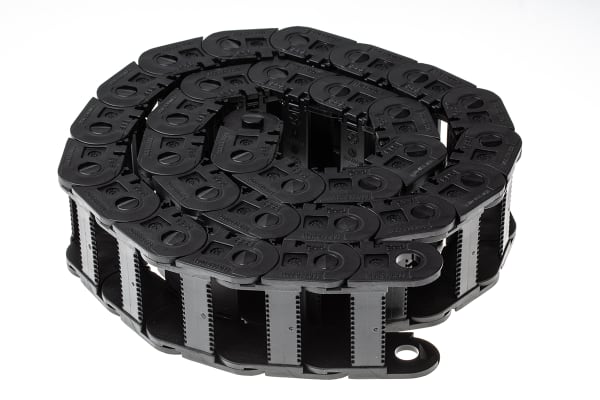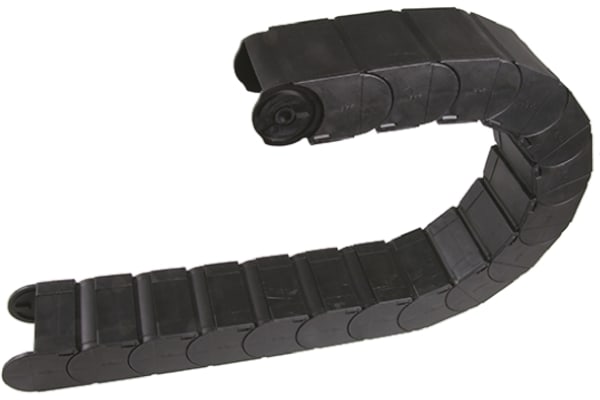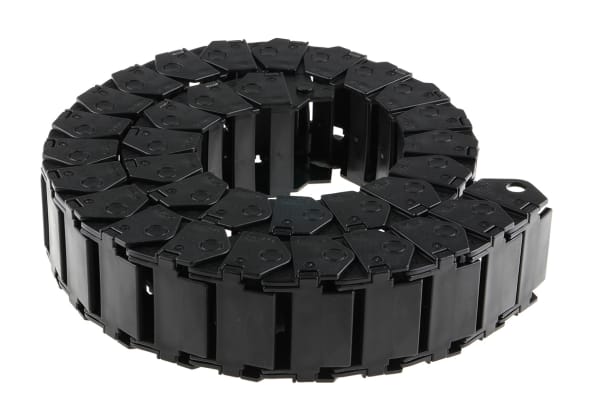Cable Trunking
Cable trunking is used both to provide protection and increase the organisation of multiple running cables. Cable protection is important within any workplace to ensure devices or machines continue to operate efficiently and prevent entanglement, as well as cohering to health and safety requirements by ensuring cables are always kept tidy and organised. Cable trunking will achieves both of these goals by eliminating any possible tripping hazards and keeping wires organised and easily identified. There are various types of trunking available, such as PVC and plastic, stainless steel, and other metals, and our range offers products from leading brands such as Betaduct, HellermannTyton, Igus, Schneider Electric and many more, including our own RS Pro. You can find out more in our cable trunking guide. What is cable trunking?Trunking is a cable tidy device used to organised cables which would otherwise be running loosely around office floors and walls, causing an untidy working environment and a possible tripping hazard. If cables need to replaced or re-wired, trunking will make the job simpler due to the easy access of the relevant wire. The robust trunking also serves as a protector from cables being damaged by falling object or being trodden on.What are the benefits of trunking?Trunking offers many benefits to both the cable system it supports and the surrounding environment, including:Cable protectionImproved design layoutSignificantly lower fire riskEasier cable managementReduced tripping hazardTrunking applicationsTrunking is primarily used for electrical cables and as such some of the applications cable trunking would be used include: the management of office and indoor workspaces, electrical workshops, schools, hospitals, hotels and anywhere with customers walking amongst cables.Trunking types and materialsTrunking is available in different styles, but is typically found with a flat rectangular design in various colours, though white or black are typically chosen for discretion. Trunking fixing styles also vary depending on the application, but include clip-on, self-adhesive, slotted and skirting trunking. There are differing materials to choose from, depending on the environment and the type of wiring within the application:Aluminium, stainless steel, galvanised steel and other metalsPVC and other plastic trunking
-
Betaduct Betaduct Metric Grey Slotted Panel Trunking - Open Slot, W25 mm x D40mm, L1m, PVC
VND1,073,140.67Pack (1 Pack of 4) -
Betaduct Betaduct Metric Grey Slotted Panel Trunking - Open Slot, W40 mm x D40mm, L1m, PVC
VND1,273,583.01Pack (1 Pack of 4) -
Betaduct Betaduct Metric Grey Slotted Panel Trunking - Open Slot, W60 mm x D80mm, L2m, PVC
VND10,177,574.89Pack (1 Pack of 12) -
GREY DIN PANEL TRUNKING W37.5XH50
VND10,123,802.78Each (1 Each of 16) -
GREY PVC OPEN SLOT TRUNKING,45X25MM 2M L
VND3,319,433.95Each (1 Each of 8) -
Hager Self Adhesive Grey Slotted Flexible Panel Trunking - Flexible Slot, W11 mm x D15mm, L0.25m, Polyamide
VND390,213.95Pack (1 Pack of 6) -
Hager Self Adhesive Grey Slotted Flexible Panel Trunking - Flexible Slot, W23 mm x D21mm, L0.5m, Polyamide
VND886,507.51Pack (1 Pack of 6) -
Hager Self Adhesive Grey Slotted Flexible Panel Trunking - Flexible Slot, W33 mm x D31mm, L0.5m, Polyamide
VND1,004,722.46Pack (1 Pack of 6) -
Hager Standard Grey Slotted Flexible Panel Trunking - Flexible Slot, W23 mm x D21mm, L0.5m, Polyamide
VND733,141.92Pack (1 Pack of 6) -
HellermannTyton Grey Slotted Panel Trunking - Open Slot, W15 mm x D30mm, L2m, PVC
VND8,974,083.93Pack (1 Pack of 32) -
HellermannTyton Grey Slotted Panel Trunking - Open Slot, W80 mm x D40mm, L2m, PVC
VND9,115,941.87Pack (1 Pack of 12) -
HellermannTyton HTC White Slotted Flexible Panel Trunking - Flexible Slot, W30 mm x D30mm, L0.5m, Plastic
VND283,506.65 -
HellermannTyton HTWD-PD Grey Slotted Panel Trunking - Open Slot, W75 mm x D100mm, L2m, PVC
VND9,642,364.55Pack (1 Pack of 8) -
HellermannTyton HTWD-PN Grey Slotted Panel Trunking - Open Slot, W40 mm x D100mm, L2m, PVC
VND7,766,617.60Pack (1 Pack of 8) -
HellermannTyton White Slotted Flexible Panel Trunking - Flexible Slot, W45 mm x D48mm, L0.5m, Plastic
VND449,844.50 -
HellermannTyton White Slotted Flexible Panel Trunking - Flexible Slot, W45 mm x D48mm, L0.5m, Plastic
VND1,252,241.55 -
Igus 10, e-chain Black Cable Chain - Flexible Slot, W26 mm x D23mm, L1m, 38 mm Min. Bend Radius, Igumid G
VND1,161,644.96 -
Igus 10, e-chain Black Cable Chain - Flexible Slot, W36 mm x D23mm, L1m, 38 mm Min. Bend Radius, Igumid G
VND1,113,103.60 -
Igus 14, e-chain Black Cable Chain - Flexible Slot, W36 mm x D25mm, L1m, 28 mm Min. Bend Radius, Igumid NB
VND1,233,620.08 -
Igus 14, e-chain Black Cable Chain - Flexible Slot, W36 mm x D25mm, L1m, 38 mm Min. Bend Radius, Igumid G
VND1,279,232.22 -
Igus 1400, e-chain Black Cable Chain - Flexible Slot, W50 mm x D21mm, L1m, 48 mm Min. Bend Radius, Igumid G
VND1,380,499.54 -
Igus 1400, e-chain Black Cable Chain - Flexible Slot, W51.5 mm x D28mm, L1m, 38 mm Min. Bend Radius, Igumid G
VND1,188,007.94 -
Igus 167, e-chain Black Cable Chain - Flexible Slot, W75 mm x D50mm, L1m, 150 mm Min. Bend Radius, Igumid G
VND2,569,135.17 -
Igus 17, e-chain Black Cable Chain - Flexible Slot, W60.5 mm x D39mm, L1m, 75 mm Min. Bend Radius, Igumid G
VND1,852,313.19



